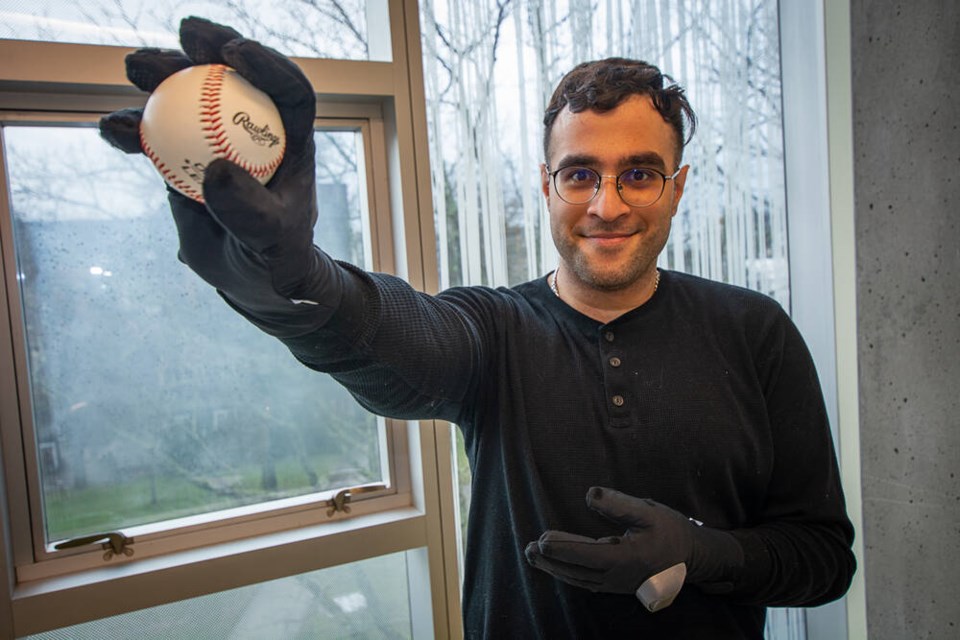New technology is giving stroke patients a hand in their journey through rehabilitation.
In January, research kicked off with a cohort of B.C. stroke survivors to incorporate “smart gloves” into their therapy routines. Developed in collaboration between UBC's Faculty of Medicine, Faculty of Applied Science and Vancouver-based startup Texavie Technologies Inc., the gloves are designed to provide treatment feedback at a fraction of the cost of existing motion-capture solutions.
Following a stroke, where blood flow is restricted to parts of the brain, people often experience loss of motor function and mobility, which can drastically lower overall quality of life. That’s why much of stroke rehabilitation focuses on restoring motor function and muscle strength.
Smart glove research has the potential to transform stroke rehabilitation by providing precise tracking of hand and finger movements compared to conventional therapy techniques, says Arvin Tashakori, UBC PhD candidate and software engineer at Texavie, who is co-creating the tech with his professor Peyman Servati.
The technology is designed to address barriers faced by stroke patients including lengthy wait times and the need to travel to treatment, said Tashakori, who lives in North Vancouver. His team has also been developing games to complement the therapy process.
“This approach not only aims to make rehabilitation more enjoyable but also facilitates patients’ ability to engage in therapeutic activities from the comfort of their homes, ensuring continuous progress and [the accessibility of] rehabilitation,” he said.
Overseen by Janice Eng, UBC professor and Canada research chair in neurological rehabilitation, the study involves around a dozen participants at local rehabilitation centres. Researchers will be looking at how the measurements recorded by the gloves compare to gold-standard clinical techniques, what patients think about the gloves and how they’re used in daily life situations.
A common metric in rehabilitation is a patient’s confidence score of how well they believe they will perform a certain task.
“Someone with a stroke goes to the kitchen, they want to make an egg, for example, so how do they interact with the pan, and how did they come up with the confidence score that they gave?” Tashakori said.
How do ‘smart gloves’ work?
Inside the gloves are dozens of stretchable “sensor yarns” that detect movement and deformation when a patient moves their hand. Signals from the sensors are sent to a computer application via Bluetooth, which interprets the information.
One aspect that separates the Texavie product from other wearable motion-capture devices is that they are completely machine washable. Instead of large mechanical parts, the small fibre sensors are lightweight by comparison and won’t short circuit on a long washer cycle. This has the added benefit of being able to easily clean the smart gloves, Tashakori said.
His team has also been stitching other clothing items with the sensor yarns, with smart shirts and pants in development.
This approach, compared to traditional motion capture technology, can be produced at a fraction of the cost. Tashakori said a motion capture system can cost upwards of $100,000, whereas he expects his product to come to market for $2,000 or less.
With extensive testing underway in both clinical and industrial settings, Tashakori said the gloves are nearly ready to be released on the market. Other than health and wellness, the smart gloves could come in handy in other fields too.
“Animation is one [industry] where they require very precise hand movements for movie creation and also games,” he said. “These gloves will really help … small studios, which don’t have the budget for high-end motion capture, and also provide really good accuracy and tracking of hand movements.”




